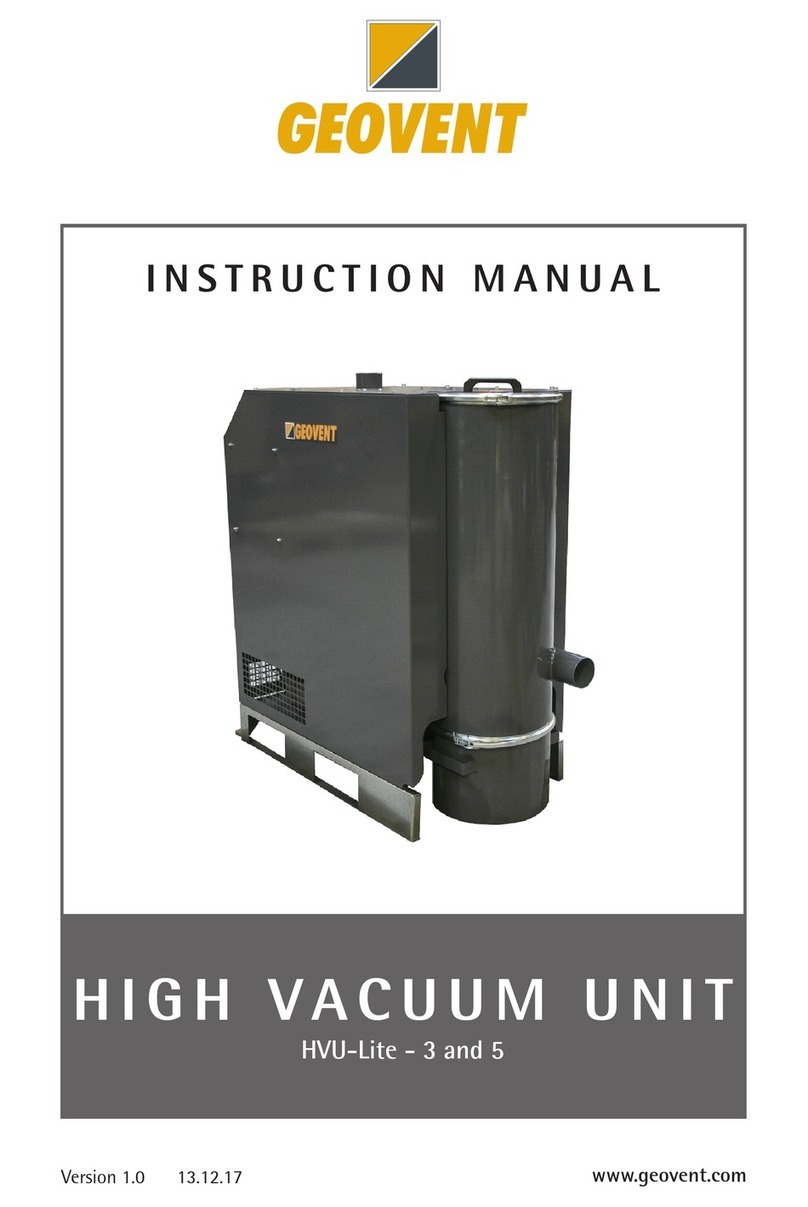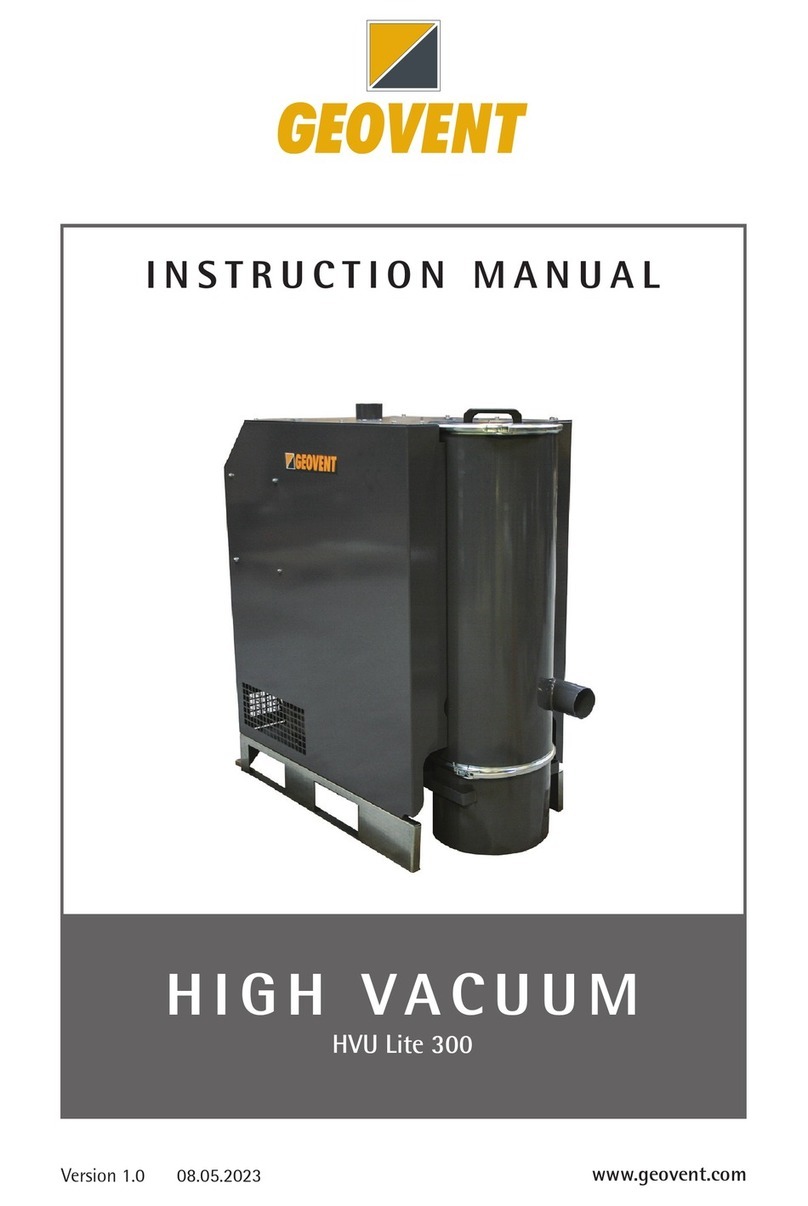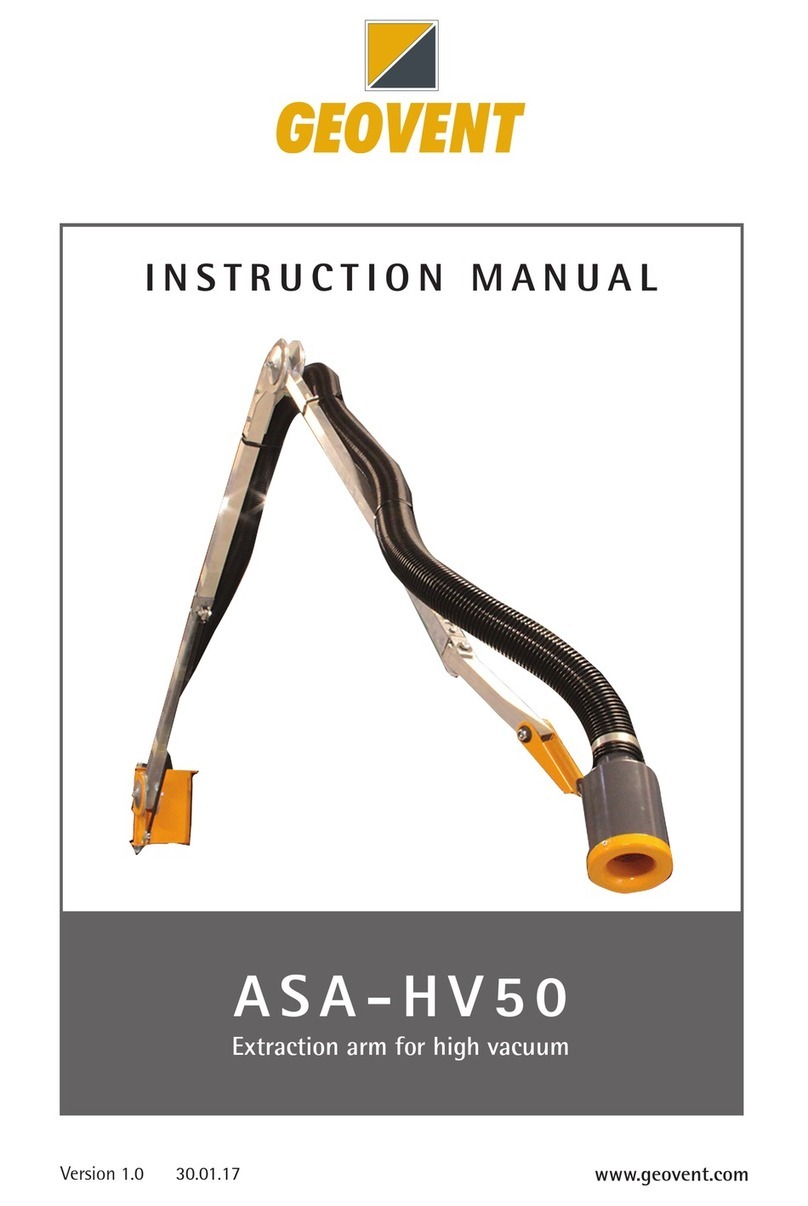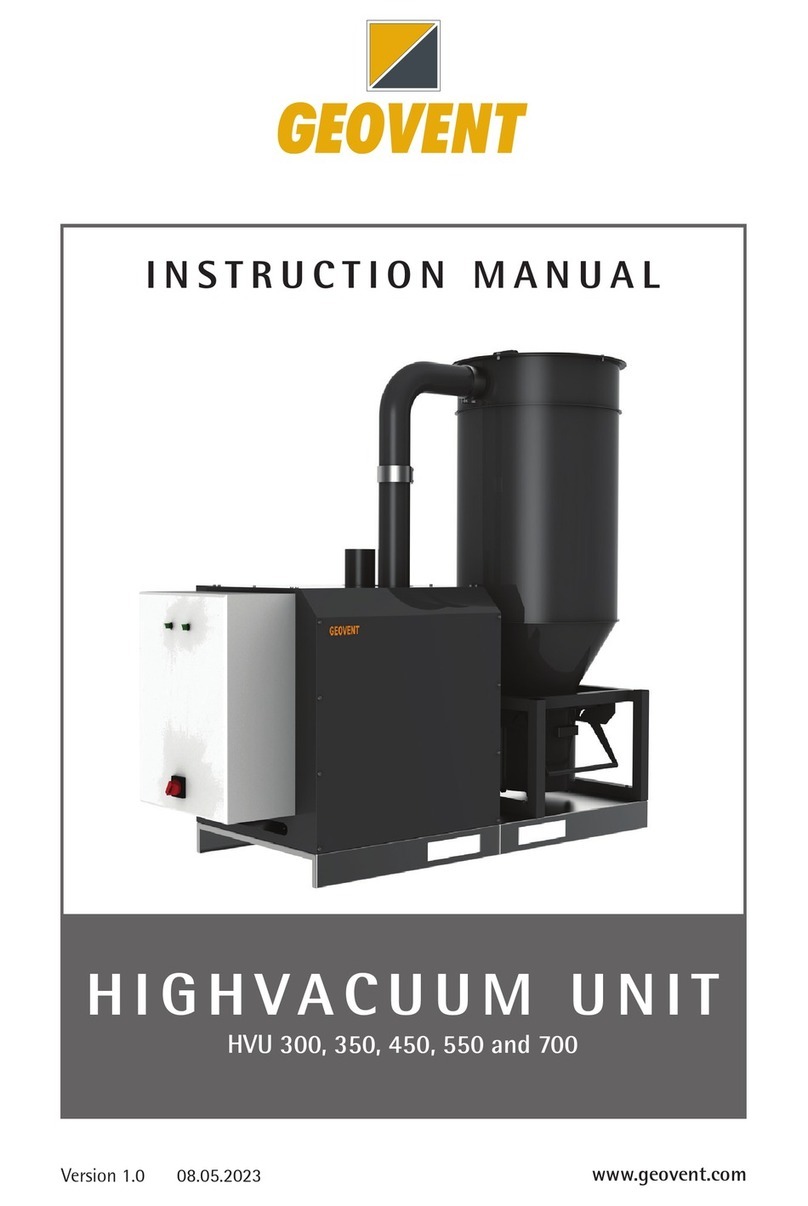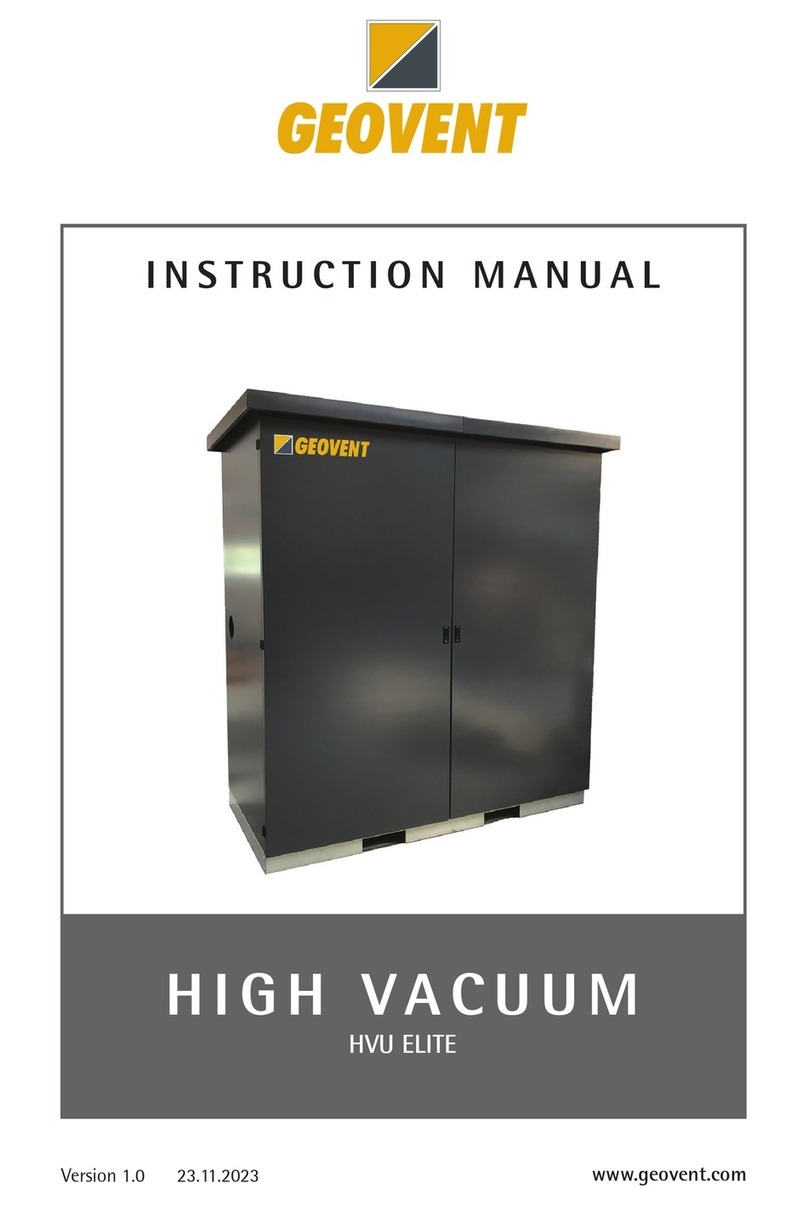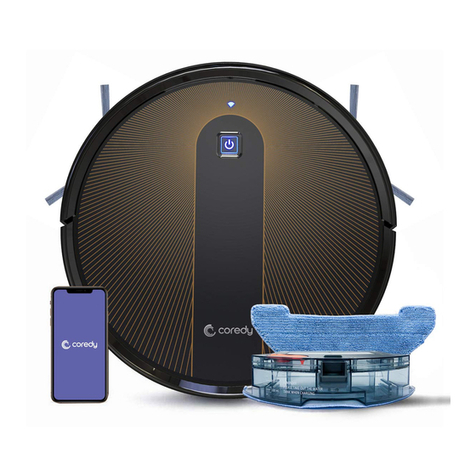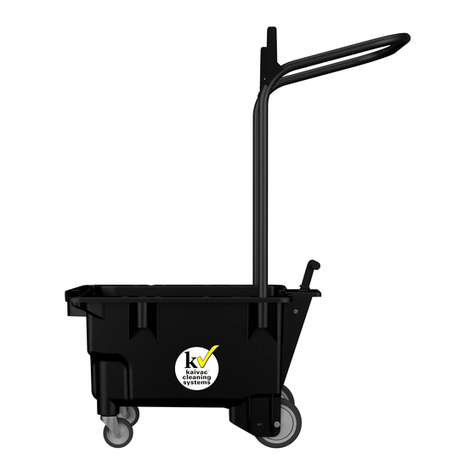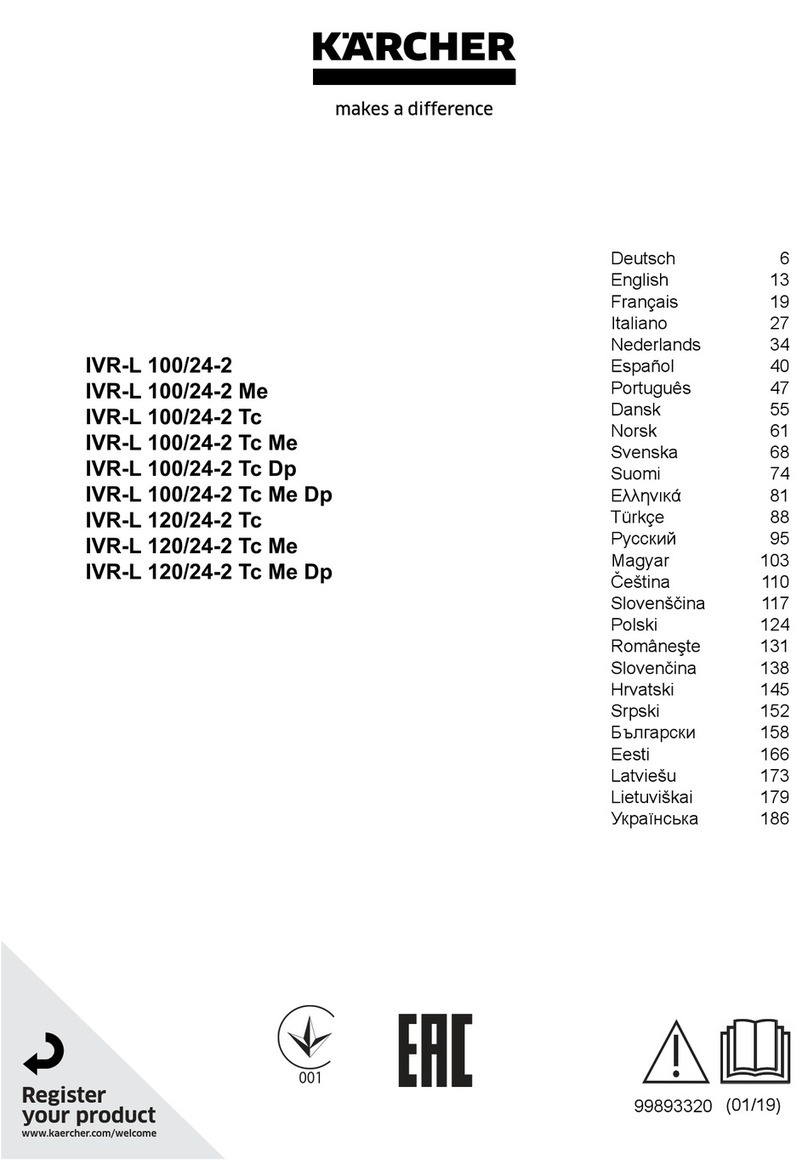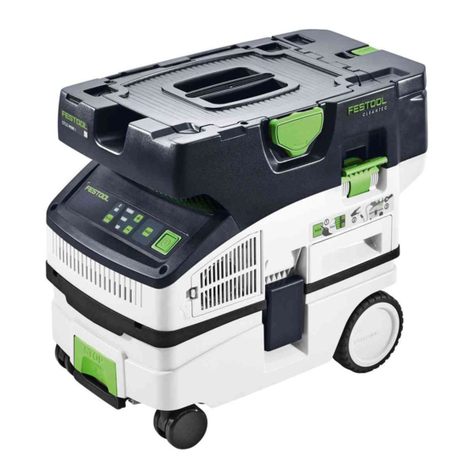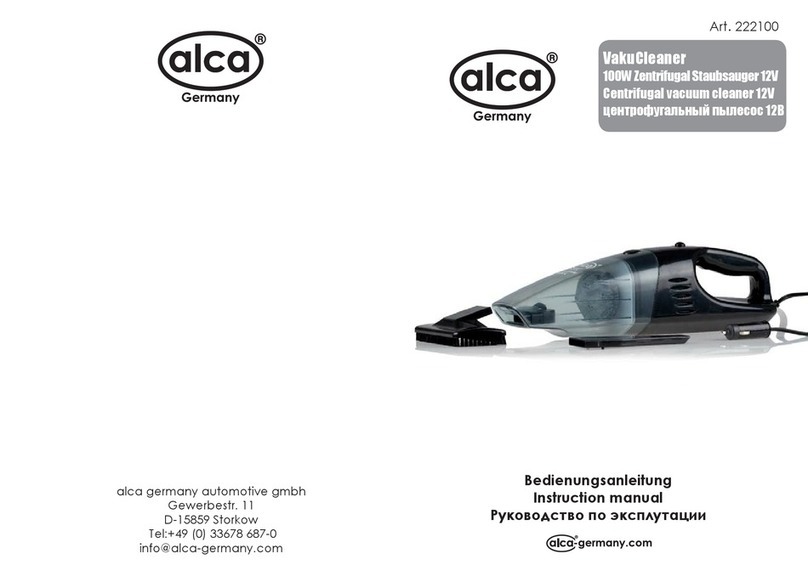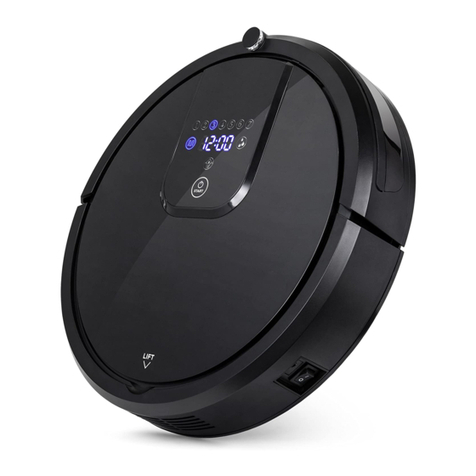Geovent WE-55 User manual

Wood dust extraction
WE-55
Version 1.0 01.08.2022
INSTRUCTION MANUAL
www.geovent.com

2
1 Introduction
The manual is intended for the buyer and user of WE-
5, 5 / D regarding installation, start-up and operational
use. Installation, start-up and operational use require
familiarity with the contents of the user manual. We re-
serve the right to revise the unit and manual to improve
functions and safety. In the event of an error - check the
manual, possibly clarify with the supplier/manufacturer.
The construction is based on current technology and
health/safety in accordance with
• 2006/42/EC Machinery Directive of the European
Parliament and of the Council of 17 May, 2006 on ma-
chinery – amending the 95/16/EC (recast)
/Journal of Laws EC L157 of 09.06.2006, page 24/
• 2014/35/EC Directive of the European Parliament and
of the Council of 26 February, 2014
on the harmonisation of the laws of the Member States
relating to the making available on the market of elec-
trical equipment designed for use within certain voltage
limits.
/Journal of Laws EC L96 of 29.03.2014/
The appliance meets the requirements included in:
• 2009/125/EC (ErP) Directive of the European Parlia-
ment and of the Council of October 21th, 2009 estab-
lishing a framework for the setting of ecodesign require-
ments for energy-related products
/Journal of Laws L285 of 31.10.2009/
• 327/2011 (EU) Commission Regulation of March
30th, 2011 on implementing the 2009/125/EC Directive
of the European Parliament and of the Council with re-
gard to ecodesign requirements for fans driven by mo-
tors with an electric input power between 125W and 500
kW
/Journal of Laws L90 of 06.04.2011/
The device has been constructed and produced on the
basis of following harmonized standards:
• PN-EN ISO 12100:2012
“Safety of machinery. Basic concepts, general princi-
ples for design. Risk assessment and risk reduction”.
• PN-EN 60204-1:2010
“Safety of machinery. – Electrical equipment of ma-
chines.
Part 1: General requirements”.
• PN-EN ISO 13857:2010
“Safety of machinery. Safe distances to prevent hazard
zones being reached by upper and lower limbs”.
• PN-EN 60529:2003
“Degrees of protection provided by enclosures (IP
Code)”
• PN-EN 61439:2010
“Low-voltage switchgear and controlgear assemblies
Part 1: General resolutions”.
• PN-EN 60335-1:2012
“Safety of electrical appliances for household and simi-
lar use.
Part 1: General requirements”.
WARNING: The fan and vibration mechanism included
in the unit may pose a risk:
• Installation, start-up or service must be carried out by
qualied personnel
• The device must be used in accordance with the pur-
pose for which it was manufactured.
2 Purpose and use
WE-5.5 is designed to remove/lter hazardous dust that
occurs during the processing of wood/wood shavings.
The chip extractor lters dust from processing machines,
and minimizes suspended dust and protects personnel
and students. The device must protect the internal/ex-
ternal environment. WE-5, 5 / D is designed for working
environment with dry dust. WE 5.5 is not intended for
environments where dry dust occurs together with po-
tential sources of ignition. The WE 5.5 is equipped with
a relief valve at the rear. WE-5, 5 / D is equipped with a
lter cleaning system. The lter is cleaned with a vibra-
tion mechanism that starts automatically when the unit is
stopped. The unit is designed for extraction and ltration
of health-hazardous dry dust that occurs in workplaces,
dust rooms, workshops, etc.
3 Manufacturer’s reservation
A. The supplier/manufacturer does not assume respon-
sibility for consequences resulting from incorrect use.
B. It is not permitted to modify the electrical construction,
without agreement
C. Any structural changes are not permitted
Contents
1 Introduction
2 Purpose and use
3 Manufacturer’s reservation
4 Technical data
5 Unit and function
6 Installation and start-up
7 Use, application and alarms
8 Troubleshooting
9 Maintenance
10 Security
11 Transport and storage
12 Terms of the guarantee
13 Air volumes and pressure
14 Electrical connection diagram 3 x 400 V
15 Electrical connection diagram 3 x 230 V
16 Simple system description
17 Usage poster for hanging in the loop room

3
D. The device is protected against mechanical damage
E. Waste bags and lters are protected and inspected
regularly
F. The device is not used to lter air containing:
• Viscous or moist substances that can be deposited
on the device’s surface
• Dust particles below 10 micrometres
• Explosive dusts and gases
• Aggressive dusts and gases
G. The supplier/manufacturer is not responsible for dam-
ages that occur due to incorrect use
F. The supplier/manufacturer is not responsible for the
wrong reason for using non-original spare parts..
4. Technical data
5 Unit and function
Info Enhet Verdi
Supply/voltage (2 possibilities) V
3x400
eller
3x230 V
Nominal current for 3x230 V A 18,5
Nominal current for 3x400 V A 10,9
Engine power kW 5,5
Recommended insurance A 25
IP Degree 55
Inlet and outlet diameter mm 2xØ125
Sound level (projection without
sound trap) dB(A)
85 (5m)
og 89 (1
m)
Sound level (impact with sound
trap) dB(A)
69 (5m)
og 76 (1
m)
Maximum air volume m³/h 1890
Maximum available pressure Pa 8000
Aggregate weight kg 280
Important principles - read before installation and use
The unit consists of four modules which are connected
together with tension bands:
Upper part (bilde til venstre under)
The top module houses the fan and shaker motor, as
well as the discharge nozzle. The fan is activated man-
ually (pos. “MAN” on the electrical cabinet) or by oper-
ating ap valves and dampers with a microswitch (pos.
“Remote” on the electrical cabinet). After use, the shak-
ing motor is activated automatically and the dust falls
from the lter and into the waste bag. Immediately after
the discharge nozzle (ø125 mm) you should increase
the dimension to Ø200/250 mm and install a sound trap.

4
Second top part (picture in the middle above)
Here is the suspension ring for lter and lter. The top
two modules cannot be rotated relative to each other.
Inlet module (picture on the right above)
This is rotatable, and the inlet can be rotated so that
the inlet pipe is placed appropriately. This module also
houses the adjustable and capacitive sensor (see image
below). This sensor is placed and adjusted (adjustment
screw on top) if the sensitivity is too great.
Bottom module
Here are the waste bag and trolley (on the left below).
Check that the door is properly closed, please tighten
the locks (on the right below). False air can contribute to
a pressure dierence and that the bag is pushed up in
front of the capacitive sensor (sensor so that an alarm
(steady red light) is triggered. practice and environmen-
tal toxins fall into the waste bag in the lower part. The
unit is controlled by electrical panel ZE-WE-5, 5. The
panel in a convenient place near the unit.

5
We recommend the use of high-vacuum pipes and
damper/ap valves with microswitches.
We recommend using high vacuum tubes and parts to
avoid leaks. The unit is a high-pressure unit within the
eld of chip extraction, and spiro pipes are not accept-
able solutions. Long seam pipes with tension bands can
also lead to leaks. We also recommend that dampers
for machine connections, and ap valves for vacuuming,
be installed with microswitches for start and stop. In this
way, it is ensured that the damper is closed after use,
and that the unit is only in operation when required.
Machines are equipped with various connection pieces,
and adaptation to the processing machine must be ex-
pected.

6
Preferably place the damper at operating height, on
the same side as the processing machine’s on and o
switch.
Start and stop from valves and dampers
We recommend that you use a two-conductor cable,
lampet type cable (brown and blue, double insulated) 2
x 0.75 mm2. On the e-panel, the conductors are con-
nected to terminal blocks 9 and 13 (top right). Units af-
ter 2018, check the form for terminal block for start/stop
from dampers and ap valves (7 and 11).In the event of
a short circuit, the unit must start.
6 Installation and start
The WE-5,5 / D chip extractor is designed for use in a
closed room. It should be placed stably on an even oor
surface. It is important to have access to air for air circu-
lation and cooling, and that the user has enough space
to change the lter and waste bag. Woodworking ma-
chines are connected with a high-vacuum pipe, damper
and exible hose to the machine’s outlet. Flexible hose
is connected to the pipe network with a sliding damper.
When the sliding damper is pulled out, a signal is giv-
en from the corresponding microswitch on the damper
to the control unit, and the unit starts. When you have
nished using the woodworking machine, the damper is
pushed back and the unit stops.
The electrical panel should be installed in an easily ac-
cessible and convenient place for the user and it must
be connected 3 x 230 or 3 x 400V, 50 Hz.

7
A silencer (900/1200 mm – Ø200/250) and a spiro for
the outdoors are recommended on the return (Ø200/250
mm recommended). Electrical work must be carried out
by certied personnel in accordance with current regu-
lations.
See also chapter 5.
Before starting, check the following:
- Correct supply voltage and grounding
- Correct connection of phases on the motor, correctly
set motor protection, correctly secured main course
- Check the physical direction of rotation of the fan. If the
impeller has the wrong direction of rotation, the suction
is poor.
- Check motor protection settings, are these set slightly
above the rated current on motors?
- Check that all microswitches are correctly connected
on the panel
- Correct attachment of the bag lter and the waste bag
- Doors closed and tightened (“false” air can cause the
bag to be sucked up and sound the alarm)
- KCapacitive sensor must be adjusted correctly. The ad-
justment screw for sensitivity is under the black cover
screw.
- Test the device by setting the black switch to the
“Local” position
- Filter cleaner takes approx. 20 seconds after stopping
- Put the black switch in “Remote” and test start and stop
from dampers/valves/micro switches
7 Use, application and alarms
Connection of the main switch, the unit in stand-by
Turn the red switch to the “ON” position
- The yellow lamp (-H1) lights up.
Start of fan/extraction - test run
Turn the black control switch to the “Local” position to
start the test. The fan starts, indicated by a lit white sig-
nal lamp. Then set the black switch to the “Remote” po-
sition.
Operation/remote control of the unit
For automatic operation of the unit, set the red switch
to “On” and the black switch to “Remote”. The unit must
now be started and stopped when sliding dampers and
ap valves are used. Micro switches must be connected.
Disconnection of Aggregate:
To stop the unit, set the red switch (-S2) to position
“OFF” and then
turn the switch (-S1) to the “OFF” position.
Full-bag alarm (steady red light):
When the waste bag is full, or the capacitive sensor de-
tects something in front (for example a waste bag), the
red lamp (- H3) “ALARM” lights up. The fan is stopped,
the bag must be emptied or the obstruction must be re-
moved, the alarm can be reset and the system starts
again.
For emptying the bag; Open the bottom door, pull out the
trolley with the waste bag to change the bag.
Clean any capacitive sensor.
Replace the waste bag with a new one, place the trolley
into the unit, lift the bag into place with the weight arms
of the trolley, close the door properly.
NB! Clean properly if there are chips around the door/
gasket. False air will cause the bag to be sucked up and
trigger the alarm again!
Under normal conditions, the shaking motor starts and
shakes the lter for approx. 20 seconds each time the
unit is stopped. The shaking removes ne dust from the
bag lter and gives a longer lter life.
Error - motor protection tripped (ashing red light)
In the event of a fault on the motor protection switch
(-Q1) or (-Q2), the lamp (-H3) “ALARM” ashes. The fan
then switches o automatically. Check the switch and
electrical connections, then start the fan by pressing the
(-S3) “RESET” button.
Examples of incorrect use and incorrect operating
areas:
a. Dust and gases beyond temperatures -20°C to 40°C.
b. Extraction of explosive dust and gases
c. Extraction of aggressive, damp or sticky media
d. Extraction of gas, smoke or dust below 10 microns
e. Extraction from hot processes (metal grinding)
Possible consequences of incorrect use:
- Clogged lters
- Damage to bearings and axles
- Corrosion damage
- Imbalance on fan, impeller
- Vibrations and damage to the shaker motor
- Deformations and fatigue fractures
- Damage due to friction
- Sparks and ignition sources can cause ignition
8 Problem solving
Always switch o the power before working on the unit,
motor, electrics, impeller etc.
Extraction disappears while the fan is running.
Clogging in the suction channel, at a branch etc. Must be
opened and cleaned
Fan stops
Check motor, impeller, supply, fuse. Contact an elec-
trician. Regarding fan motor must be checked by the
manufacturer/specialist. Check any alarms (full bag or
engine protection)
Vibrations
Check the impeller for dirt or damage. Check engine for
bearing noise.

8
Engine overheating
Check for damage to the engine. Check cause.
Bad suction - incorrect direction of rotation of fan
Check the direction of rotation of the impeller (both direc-
tions of rotation will create suction). Exchange phases in
case of wrong direction of rotation.
Check for tight lter, channel network and damper/suc-
tion to processing machine.
Bag lter and waste bag
Replace bag lter and pressure equalization lter ap-
prox. once per year or when it is dense.
Change the waste bag when the bag is full. This is re-
vealed by inspection and visual inspection, or when the
full-bag alarm gives a signal. The sensitivity of the full-
bag sensor is adjustable, see the top of the sensor, un-
der the plastic screw there is a small brass screw that
can be adjusted as needed.
Make sure that the waste bag is placed properly in the
holder and that the holder is placed against the packing
before the door to the waste bag is closed.
Use only waste bags made of thick-walled paper.
If the bag is sucked into the lter unit, this indicates that
air is leaking in at the bottom door, and that this must
either be cleaned or tightened for better sealing.
Red warning light is lit/ashing - see chapter
9 Maintenance
Daily inspections include visual observations and func-
tion observations. Errors must be reported to mainte-
nance personnel.
Weekly/monthly inspection includes replacement, in-
spection of bag and lter, as well as cleaning of the unit
inside.
Parts that are replaced if necessary:
Waste bags, 240 L, are exchanged for equivalent paper
waste bags, plastic bags must not be used. These will
be absorbed at low pressure dierences.
Parts that are inspected and recommended to be re-
placed annually:
Parts that are inspected and recommended to be re-
placed annually:
Rubber suspension for lter bags. 3 suspensions + mo-
tor shaft from shaker motor holds lter bags. The rub-
ber is exposed to relatively hard loads and has a limited
lifespan.Vi anbefaler å etterse alle gummioppheng årlig.
The main lter and pressure equalization lter are rec-
ommended to be changed once a year.
Periodic and planned inspections include lters, fans,
bearings, motors etc. leaks in pipes, dampers etc.
To ensure correct function, we recommend carrying out
technical inspections of the unit at regular intervals
periods. Check o
- fan
- the lter cleaning/shaking mechanism
- electrical functions
- dampers, pipes, connections
Changes are carried out by qualied personnel or by the
caretaker service
Before maintenance: Switch o the unit, red power
switch (-S1)
Make sure that the risk of the device being started by
service workers is eliminated. Set switches on the unit’s
control cabinet in the “o” position. Feel free to use
warning signs:
“DO NOT SWITCH ON GENERATOR - MAINTENANCE
WORK”
Wait until the motors stop rotating. Before maintenance,
remove contaminants that have accumulated inside the
unit.
The unit can be operated again after safety checks and
maintenance have been carried out.

9
Action Periodic By
need
Interval
periods
Check for dam-
age, corrosion,
vibrations
x
Upon
receipt/
monthly
Cleaning of seals/
doors/interior x x
Monthly,
at bag
change
Check fan rotation x At startup
Check the lter
cleaner x Annual
Change main lter
and control lter x Annual
Check fan wheel/
impeller x Annual
Inspect the bear-
ings for bearing
noise
x Annual
Grease the bear-
ings x25,000
hours
Check motor pro-
tection switch and
terminal clamps
xBy alarm/
yearly
Check and clean
capacitive sensor
(full-bag alarm)
x x Monthly
Check start/stop
with dampers and
ap valves
x x Annual
Maintenance and service plan for the unit, see sugges-
tions below:
Maintenance and recommended service
Always check the device upon receipt!!!! Check for
transport damage, damage to packaging, to the surface
Improper handling of the device during transport, load-
ing and reloading can cause:
- Damage to unit housing, fan, control cabinet,
automatics.
Storage info:
- The unit must be stored in packaging that protects it
from external in uences.
- Storage space must be dry, humidity should not
exceed 70%, dust loads should be avoided.
- Storage temperature -25°C to 40°C
12 Terms of the guarantee
Warranty for the purchased unit is in accordance with
NL09. The warranty does not cover:
• mechanical damage and problems caused by the user
or installer
• defects and damage caused by incorrect use described
in this guide
• damage that occurs during transport, storage or inade
quate maintenance,
Violation of the points in chapter 3 “Reservations from
the manufacturer” leads to the loss of warranty.
Modi cations and changes made by the user to the unit
will void the warranty.
13 Air volume and pressure
Side 14 av 20
12 Vilkår for Garantien
Garanti for den kjøpte enheten er iht. NL09. Garantien omfatter ikke:
• mekanisk skade og problemer forårsaket av bruker eller installatør
• mangler og skader som oppstår ved feilaktig bruk beskrevet i denne veiledningen
• skader som skjer under transport, lagring eller mangelfullt vedlikehold,
Overtredelse av punktene i kapittel 3 "Forbehold fra produsent" fører til bortfall av garanti.
Modifikasjoner og endringer foretatt av bruker på aggregatet fører til bortfall av garanti.
13 Luftmengder og trykk
Do not use water when cleaning the unit.
Use only original spare parts
10 Safety
Start and use is only recommended when you are famil-
iar with the contents of this user manual. Electrical con-
nections must be connected according to the attached
electrical diagrams and in accordance with the recom-
mendations of Chapter 6 of this manual.
Work related to electricity must be carried out exclusive-
ly by knowledgeable personnel. Do not use the unit for
extraction from tools that cause sparks or heat.
11 Transport and storage
The unit is delivered assembled in foil, placed on a pallet.
During transport, the device must be protected against
tipping and impact damage.

1010
14 Electrical connection diagram for
3 x 400 V
(ask for separate forms, if they are di cult to read)
Side 15 av 20
14 Elektriske koblingsskjema for 3 x 400 V
(be om separate skjemaer, dersom de er vanskelig å lese)

1111
Side 16 av 20

1212
15 Electrical connection diagram for
3 x 230 V
(ask for separate forms, if they are di cult to read)
Side 17 av 20
15 Elektriske koblingsskjema for 3 x 230 V
(be om separate skjemaer, dersom de er vanskelig å lese)

1313
Side 18 av 20

14
16 Simple system description of chip ex-
traction WE-5.5 (5.5 kW)
The WE units have been developed for chip and chip ex-
traction in ductwork rooms and smaller carpentry work-
shops with a focus on the following parameters:
• Point extraction, closed system
• Vacuuming of benches and oors
• Ease of use and suitable automation
• Area-ecient and easy installation
• Simple maintenance
Point extraction, closed system
The unit produces up to 1,800 m3/h in free-blowing
mode, and normally has the capacity for 1-2 machines
in simultaneous operation. This of course depends on
the design of the pipe network and the total pressure
drop in the system. By leading the exhaust air out of the
room, you also avoid the return of odours, gases and
micro-particles, i.e. a closed system.
Vacuuming of benches and oors
The maximum static pressure turnover in the aggre-
gates is approx. 8,000 Pa. This is sucient to provide a
satisfactory vacuuming eect, and is an appropriate way
of removing dust. The dust is removed at the rst touch
and the stirring up of ne particles, as when sweeping, is
avoided. Hand tools can also be connected to the vacu-
um cleaner outlet.
Ease of use and suitable automation
The units are supplied with
• automatic lter cleaning to avoid a clogged lter and
reduced suction volumes. After each shutdown, the l-
ter is cleaned automatically.
• capacitive sensor for notication of full bag. When the
waste bag is full, the unit stops, the bag must be re-
placed and the signal must be acknowledged before
re-starting the system (standard). Sensitivity is adjust-
ed after the system has been put into use and the dust
is known.
• start and stop using micro switches on machine
connections (dampers) and vacuum cleaner outlets
(ap valves). Micro switches short-circuit a 24 V circuit
and start the unit (standard).
• other automation on request.
Area-ecient and easy installation
The unit is delivered complete, with a free-hanging auto-
matic cabinet, is around ø800 mm, and has a rotatable
inlet module. This contributes to exible placement in
relation to where the pipe is placed. Usual locations for
the unit are in the ducting room or material warehouse.
Easy maintenance
The unit is an all-in-one unit. The waste bag is changed
when the bag is full alarm. The lter is normally changed
once per year. Fan is directly driven. The system is in-
spected once per year. Regular inspection for noises,
changes in suction volume or mechanical breakage.
Itek oers complete service agreements with inspection
and parts replacement.
17 Usage poster – hung up in the storage
room
The WE units are intended for chip and chip extraction in
slough rooms and smaller carpentry workshops:
• Point extraction, closed system
• Vacuuming of benches and oors
• Ease of use and suitable automation
• Area-ecient and easy installation
• Simple maintenance
• Automatic on/o when using ap valves/dampers
• DO NOT USE for emery wheels, cautery pens or any
thing else that can create sparks.
Point extraction, closed system
The unit produces up to 1,800 m3/h in free-blowing
mode, and normally has the capacity for 1-2 machines
in simultaneous operation. This of course depends on
the design of the pipe network and the total pressure
drop in the system. By leading the exhaust air out of the
room, you also avoid the return of odours, gases and mi-
cro-particles. The lter is cleaned with a shaking motor
after use.
Settings on electrical control box
• Red main switch for power on and o
• Black switch “Local” for test and manual operation
• Black “Remote” switch for daily operation and
operation from ap valves and dampers
• Shaking motor cleans the lter after each use.
Vacuuming of benches and oors
• Open ap valves, connect associated hoses. The unit
starts automatically and runs until you disconnect the
vacuum cleaner hose from the ap valve.
Chip extraction from machines
• Flexible hoses mounted on sliding dampers are
connected to the outlet of the woodworking machine.
The chip extractor/aggregate is started by opening/
pulling out the sliding damper. The sliding damper is
opened before the processing machine (saw, planer,
etc.) is started, and closed after the processing ma-
chine has stopped. If chips build up in the hoses, shake
the hoses while the unit is running to remove chips.
Regular inspection
• Dust is removed from dampers, ap valves and
aggregate.
• Dust is removed from the waste bag’s chamber and
door. The door MUST be closed.
• In the event of an alarm, check the operating instruc-
tions
• The bag is changed if necessary. Use the right card-
board bag.

15
• Check that the bottom door is tight and free of dust,
otherwise the bag will be sucked into the lter and give
an alarm.
• Filters are changed at least once a year
• Steady red alarm light means that the bag is full, or that
the bag is being sucked up
• Flashing red light means that a motor protection has
tripped
Read operating instructions!
NB! Fan and other moving parts can cause personal in-
jury if they are touched during operation! Only autho-
rized personnel must open the top hatch on the unit.

1616
6.0 EC declaration of conformity according to Appendix IIA
HOVEDGADEN 86 • DK-8831 LØGSTRUP
(+45) 8664 2211 • [email protected]
The producer hereby declares that:
Product: Chip extraction system
Model: WE 5,5
is in accordance with the following directives and stan-
dards:
European Parliament and Council Directive 2006/42/
EC of 17 May 2006 on machinery and on amendments
to Directive 95/16/EC
EN ISO 14121-1:2007 Risk assessment – Part 1
EN ISO 12100-1:2005 Basic concepts and general
principles for planning
EN ISO 12100-1:2009 construction and design
Part 1: Basic terminology and
methodology
EN ISO 12100-2:2005 Basic concepts and general
principles for planning
EN ISO 12100-2:2009 construction and design
Part 2: Technical principles
Authorized to collect the technical dossier:
Lise Cramer
Date: 01.08.2022
Profession: Director
Name: Thomas Molsen
Signature : ____________________________
Table of contents
Other Geovent Vacuum Cleaner manuals
